Abstract
OBJECTIVE: The purpose of this study was to evaluate the regional pancreatectomy as surgical therapy for ductal adenocarcinoma of the pancreas and to evaluate potential prognostic factors. SUMMARY BACKGROUND DATA: Regional pancreatectomy was developed as a more adequate surgical procedure for pancreatic cancer in an attempt to improve the cure rate for this highly lethal disease. Few studies have evaluated large numbers of patients treated with this technique, and in recent years the emphasis has been on more limited surgery for pancreatic cancer. METHODS: Fifty-six patients with ductal adenocarcinoma of the pancreatic head were treated by regional subtotal or total pancreatectomy. Clinical and pathologic parameters were reviewed and potential prognostic factors were compared statistically. The three patients who died within 30 days of the operation were excluded from the survival analysis. RESULTS: Primary tumor size was the strongest determinant of prognosis. The mean tumor size was 3.9 cm (range, 1-7 cm). Eighty-five percent of patients had peripancreatic soft tissue invasion microscopically, and 58% had regional lymph node metastasis. Kaplan-Meier survival curves indicated a 33% 5-year survival for patients with tumor 2.5 cm or less in diameter (n=12) and 12% for patients with larger tumors (n=39). No patient with a tumor larger than 5 cm survived more than 5 years. Mean tumor size was not significantly associated with lymph node metastases, but 5 of 12 patients (42%) with primary tumor < or =2.5 cm had lymph node metastases. Twenty-four percent of patients with negative lymph nodes and 14% with positive lymph nodes survived 5 years. The difference was not statistically significant (p=0.3), but this is likely related to sample size. The 30- day operative mortality was 5.3%. The most common complications were infection, gastrointestinal bleeding, and gastric stasis. CONCLUSIONS: After regional pancreatectomy, tumor size is the strongest predictor of prognosis. A multi- institutional randomized prospective trial of regional pancreatectomy versus pancreaticoduodenectomy is warranted in previously untreated, noninfected cases.
Full text
PDF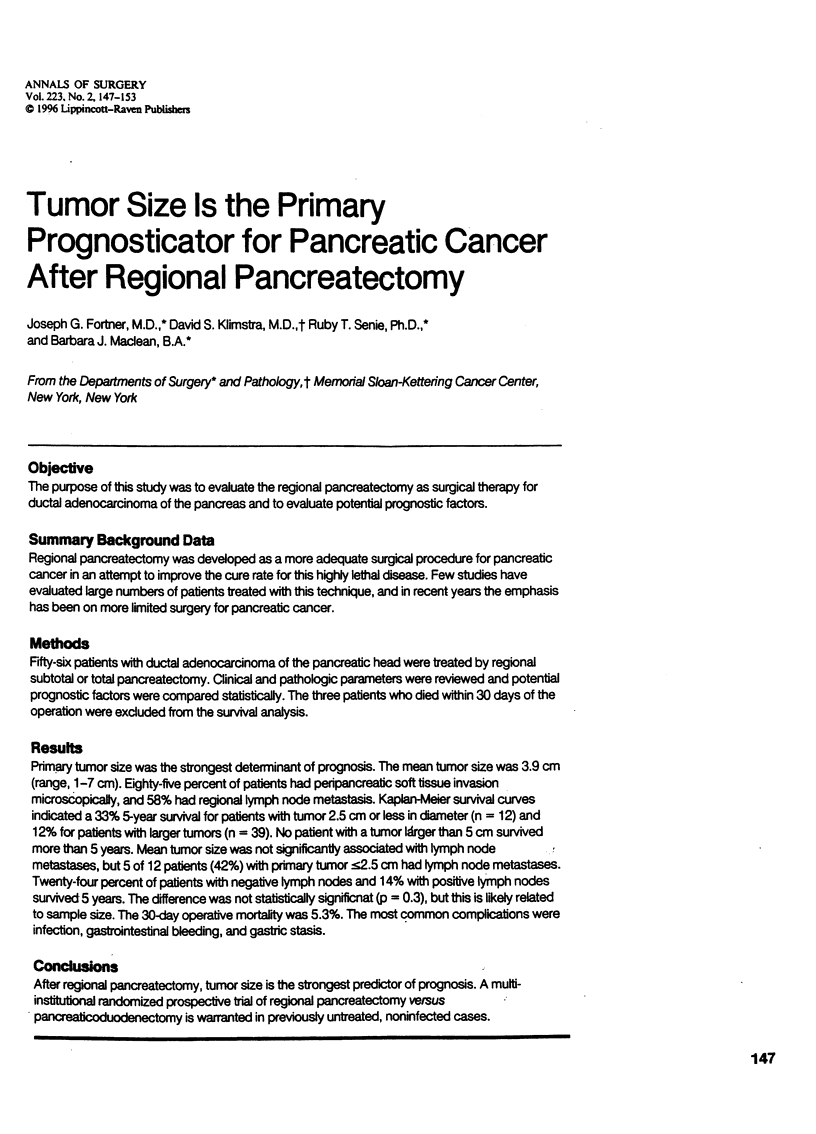
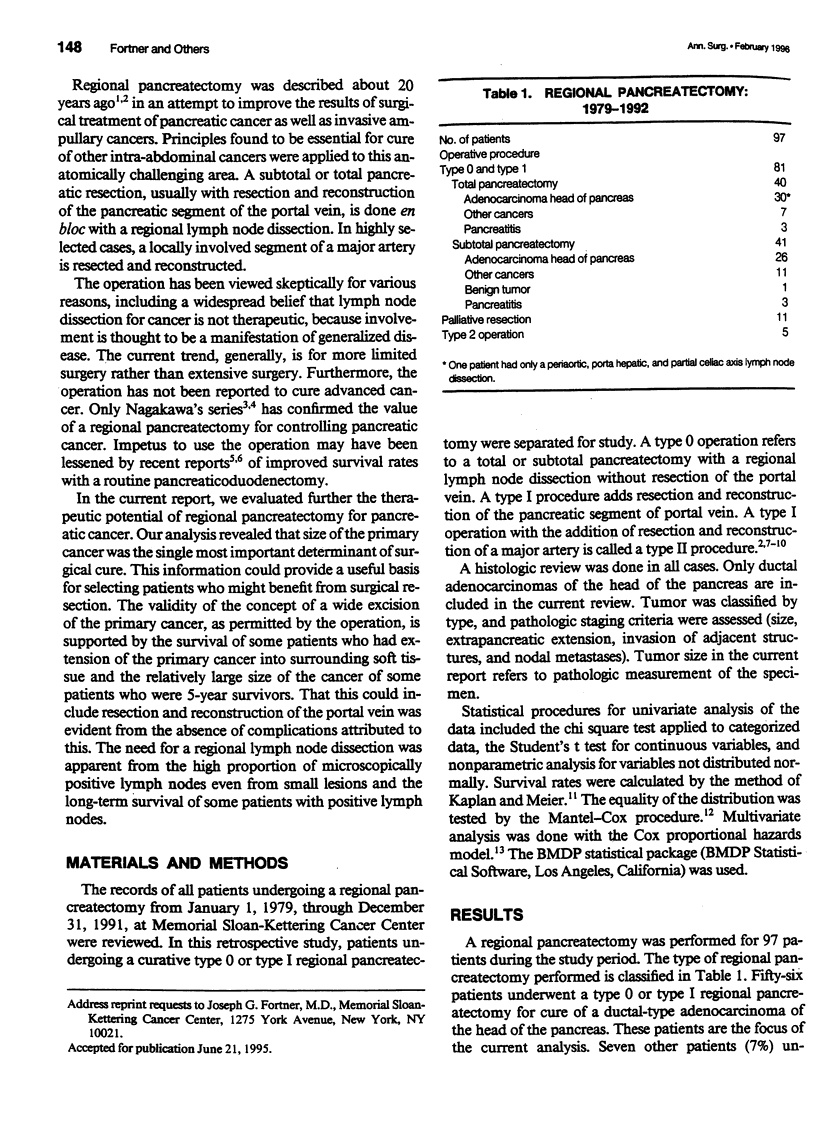
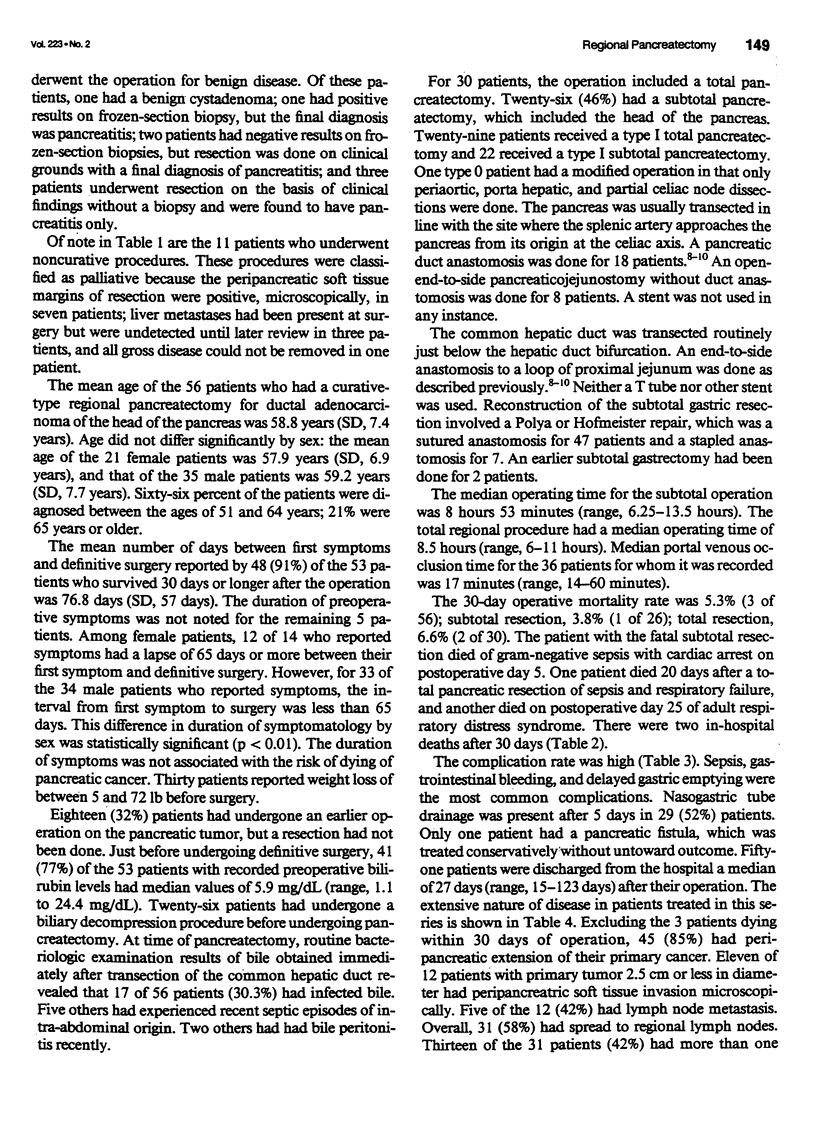
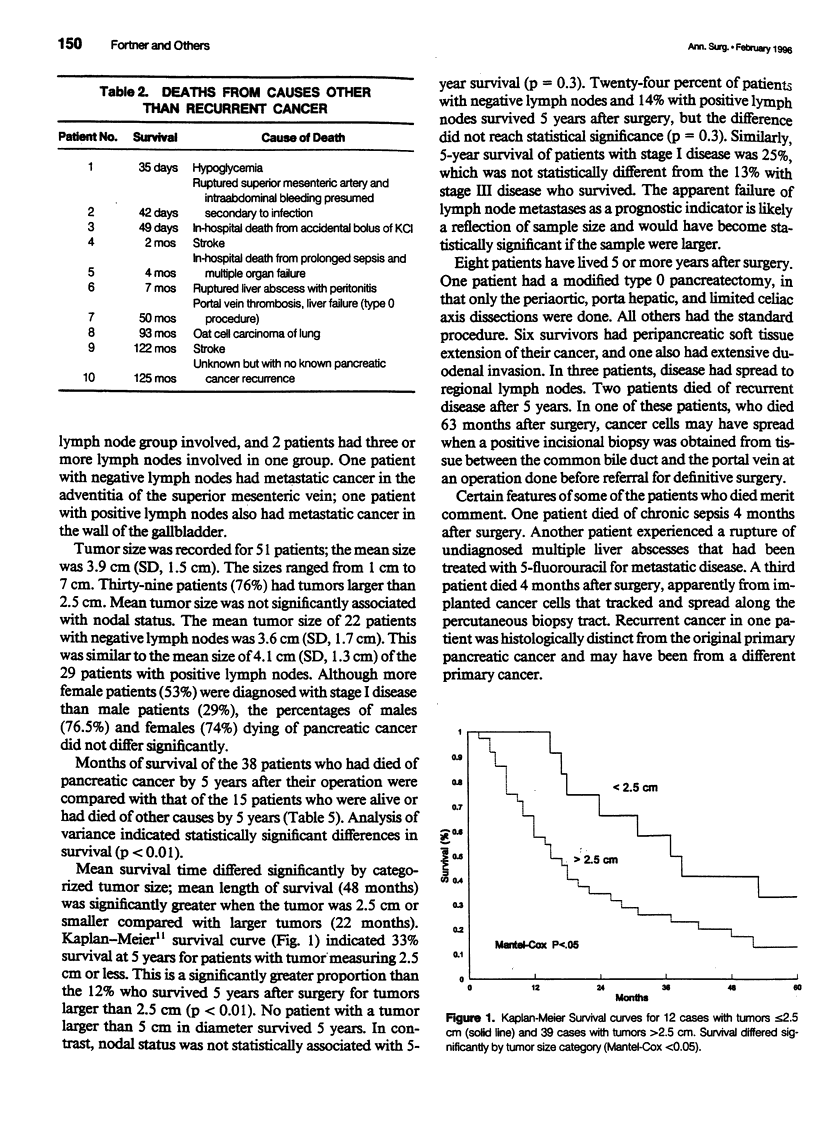
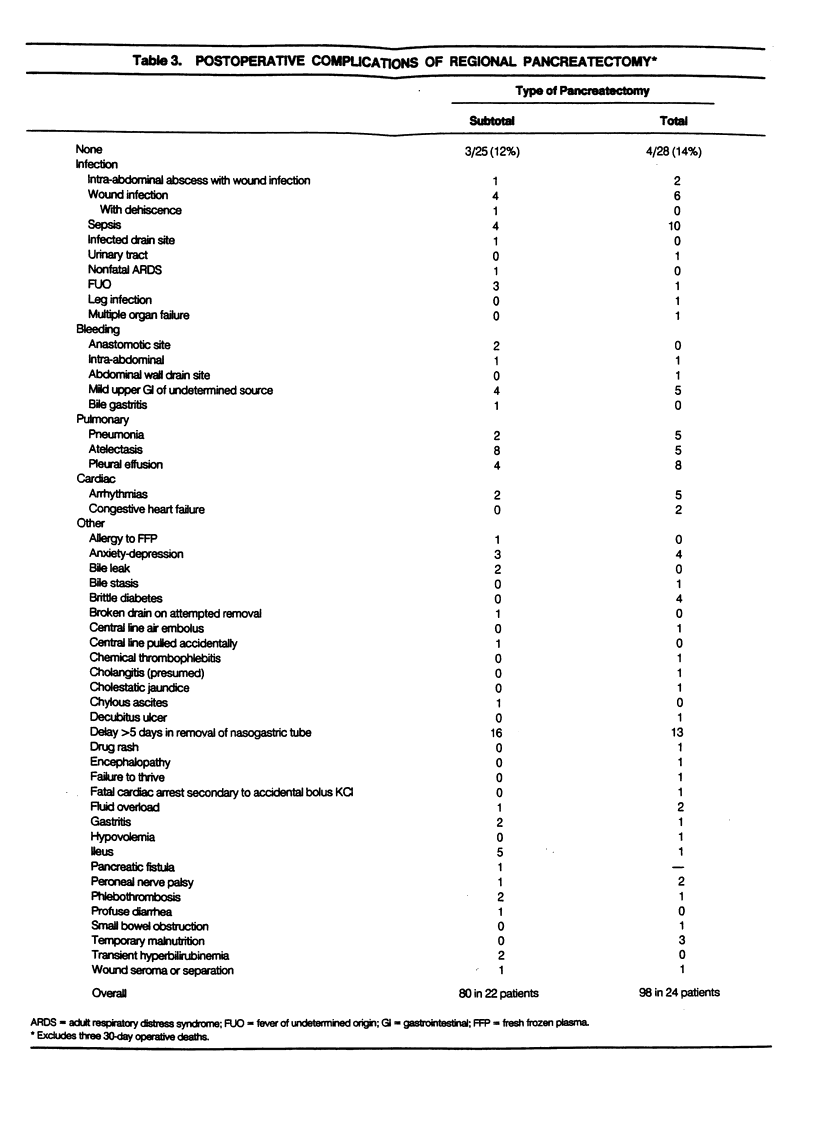
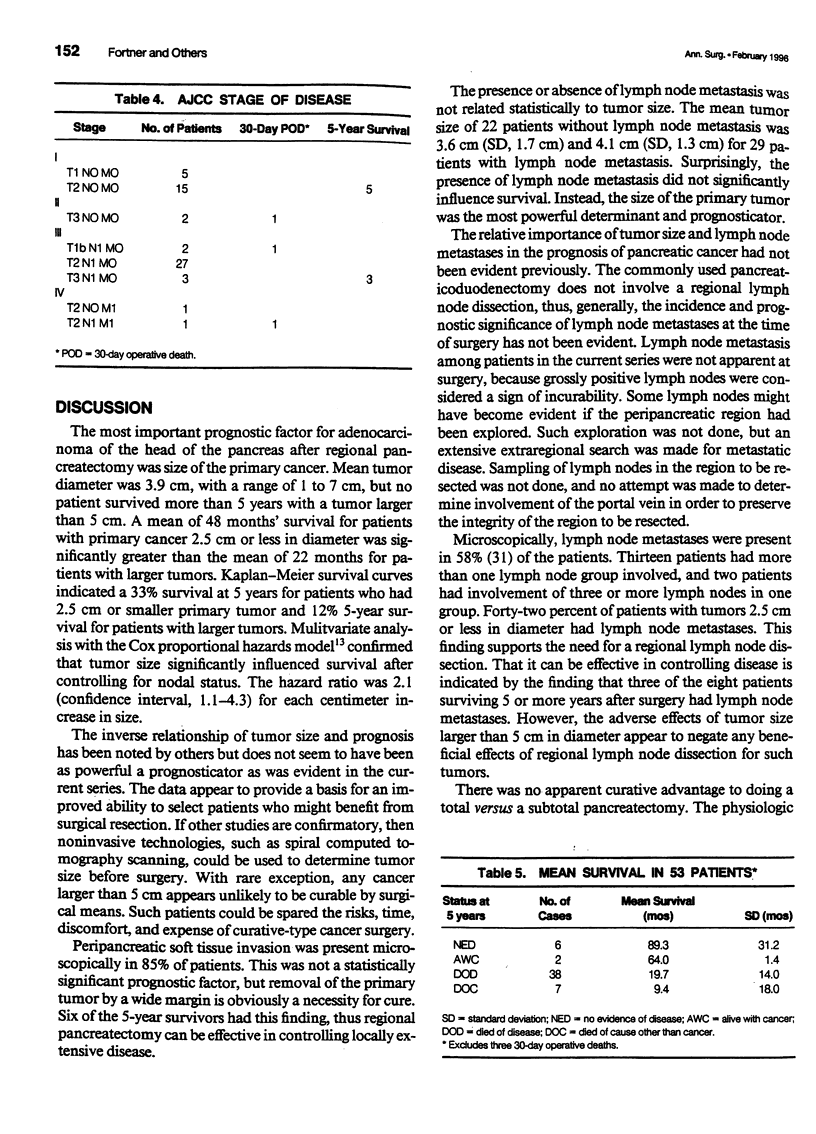

Selected References
These references are in PubMed. This may not be the complete list of references from this article.
- Cameron J. L., Crist D. W., Sitzmann J. V., Hruban R. H., Boitnott J. K., Seidler A. J., Coleman J. Factors influencing survival after pancreaticoduodenectomy for pancreatic cancer. Am J Surg. 1991 Jan;161(1):120–125. doi: 10.1016/0002-9610(91)90371-j. [DOI] [PubMed] [Google Scholar]
- Fortner J. G. "Radical" abdominal cancer surgery: current state and future course. Jpn J Surg. 1989 Sep;19(5):503–509. doi: 10.1007/BF02471655. [DOI] [PubMed] [Google Scholar]
- Fortner J. G., Kim D. K., Cubilla A., Turnbull A., Pahnke L. D., Shils M. E. Regional pancreatectomy: en bloc pancreatic, portal vein and lymph node resection. Ann Surg. 1977 Jul;186(1):42–50. doi: 10.1097/00000658-197707000-00007. [DOI] [PMC free article] [PubMed] [Google Scholar]
- Fortner J. G. Regional resection of cancer of the pancreas: a new surgical approach. Surgery. 1973 Feb;73(2):307–320. [PubMed] [Google Scholar]
- Fortner J. G. Technique of regional subtotal and total pancreatectomy. Am J Surg. 1985 Nov;150(5):593–600. doi: 10.1016/0002-9610(85)90444-1. [DOI] [PubMed] [Google Scholar]
- Fortner J. G. The rationale, technique and results of treating pancreatic and peripancreatic cancer regional pancreatectomy. Acta Gastroenterol Belg. 1987 Jan-Feb;50(1):121–127. [PubMed] [Google Scholar]
- Mantel N. Evaluation of survival data and two new rank order statistics arising in its consideration. Cancer Chemother Rep. 1966 Mar;50(3):163–170. [PubMed] [Google Scholar]
- Nagakawa T., Konishi I., Ueno K., Ohta T., Akiyama T., Kayahara M., Miyazaki I. Surgical treatment of pancreatic cancer. The Japanese experience. Int J Pancreatol. 1991 Summer;9:135–143. doi: 10.1007/BF02925589. [DOI] [PubMed] [Google Scholar]
- Trede M., Schwall G., Saeger H. D. Survival after pancreatoduodenectomy. 118 consecutive resections without an operative mortality. Ann Surg. 1990 Apr;211(4):447–458. doi: 10.1097/00000658-199004000-00011. [DOI] [PMC free article] [PubMed] [Google Scholar]


